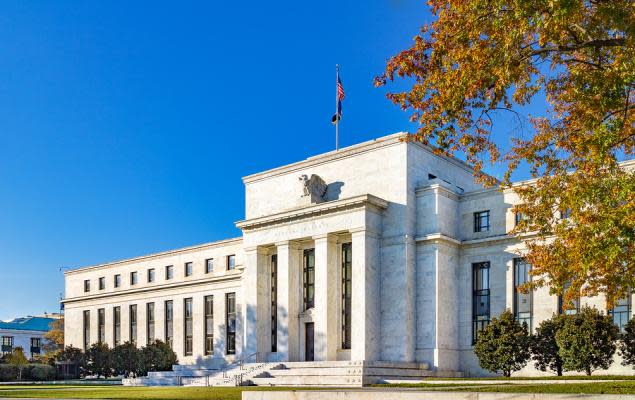Here's Why Bank Stocks are Gaining on Powell's Renomination

On Monday, President Joe Biden renominated incumbent Federal Reserve Chairman Jerome Powell for a second four-year term. The markets seem to have appreciated the move as this will help continue the central bank’s relatively accommodative and moderately hawkish monetary policy stance.
The U.S. economy is still facing record-high inflations as the effects of the COVID-19 pandemic persist. In such a scenario, Powell’s renomination is expected to remove ambiguities (to some extent) from investors’ minds regarding the central bank’s approach to balancing inflationary pressure, full employment and economic growth.
Bank investors seem to be bullish on this development. Thus, several bank indexes, including the KBW Nasdaq Bank Index and the SPDR S&P Regional Banking ETF have been rallying since then. Shares of several banks like JPMorgan JPM, Wells Fargo WFC, KeyCorp KEY and U.S. Bancorp USB have been gaining as well.
The primary reason for this optimistic stance is the expectation that the central bank will step up the pace of normalizing monetary policy to counter rising consumer prices. It must be noted that this October, consumer prices surged at the quickest pace in more than 30 years.
Thus, investors are of opinion that the Fed will hasten tapering its $120 billion per month bond-buying program (which got underway earlier this month). The central bank’s current plan is to end bond purchases by mid-2022.
Powell has been insisting for months now that the surging inflation numbers are most likely transitory, and the Fed will be “patient” in determining when to begin raising short-term interest rates from near-zero. However, the recently surging consumer prices and robust economic expansion point that the central bank may have to change its course soon.
This belief is further getting impetus from the recent public debates among some of the Fed officials on whether to pull out support for the economy faster to help control surging inflation. Therefore, investors are now projecting that the central bank will start raising rates by June 2022. Per the CME FedWatch Tool data, at present, there is a 73.5% probability that the Fed will move ahead with tightening monetary policy stance beginning June 2022.
As banks thrive the most in the rising rate environment, this development will be positive. Since last March, banks like JPMorgan, U.S. Bancorp and KeyCorp [currently carrying Zacks Rank of 3 (Hold)] have been witnessing contraction of net interest margins (NIM) (an important barometer to gauge banks’ financial performance) owing to near-zero rates. This is also hurting their top-line growth.
You can see the complete list of today's Zacks #1 Rank (Strong Buy) stocks here.
Thus, as the Fed starts raising interest rates, pressure on margins will gradually alleviate and support banks’ net interest income (NII). While banks including JPMorgan, Wells Fargo, U.S. Bancorp and KeyCorp undertook several strategic initiatives like expanding fee-based revenue sources and/or streamlining businesses to focus on core operations to counter the adverse impact of lower rates, NII still remains a major portion of their total revenues.
The renomination of Powell has also pushed up the treasury yields. Specifically, yields on two- and five-year Treasuries, which are more sensitive to rate views, have hit the highest levels since March 2020. Thus, the steepening of the yield curve (the difference between short and long-term interest rates) is likely to support banks’ NIM in the near term.
Other than these, Powell, a former private equity lawyer, is considered “bank friendly” and understands that the banking industry has become over-regulated following the 2008 financial crisis. Under him, the Fed has undertaken several steps to ease some of the stringent banking regulations.
Hence, these along with solid economic growth (that will lead to further rise in loan demand) are turning out to be a win-win situation for banks. Investors must add and/or hold on to JPMorgan, U.S. Bancorp, Wells Fargo, KeyCorp and several other bank stocks to generate profitable returns.
Want the latest recommendations from Zacks Investment Research? Today, you can download 7 Best Stocks for the Next 30 Days. Click to get this free report
Wells Fargo & Company (WFC) : Free Stock Analysis Report
JPMorgan Chase & Co. (JPM) : Free Stock Analysis Report
U.S. Bancorp (USB) : Free Stock Analysis Report
KeyCorp (KEY) : Free Stock Analysis Report
To read this article on Zacks.com click here.
Zacks Investment Research

 Yahoo Finance
Yahoo Finance 